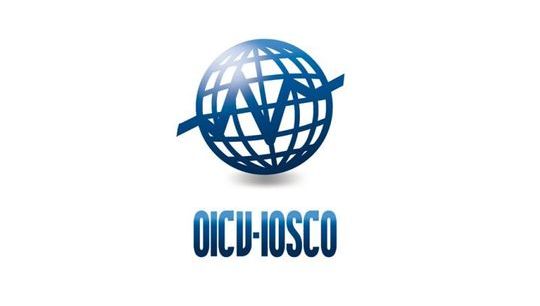Hedge funds and the state of responsible investing
By Jason Mitchell, Fund Manager, GLG Partners, and Steven Desmyter, Managing Director and Head of Nordics and Benelux, Man Group
Published: 30 June 2015
Responsible investing broadening its base
A roundtable in May 2015, cosponsored by the Alternative Investment Management Association (AIMA) and the United Nations Principles for Responsible Investment (UN PRI), provided the opportunity to reflect on hedge fund activity in the area of responsible investing (RI), supported by views from asset owners and consultants. While other asset classes have been quick to adopt RI codes like UN PRI’s Principles, alternative asset managers have been slower to take up. Asset owners have traditionally set the RI agenda and formed the foundation of the UN PRI signatory list. Long only and private equity strategies followed suit as their longer-term investment duration cycle assigns a higher value on non-financial factors like governance. The momentum in both signatory count and assets under management (AUM) has broadened from this initial base over the past decade.
Fig 1. UN PRI total signatories and AUM

Source: UN PRI, 2015.
But while other asset classes — fixed income, for example — have become increasingly prominent, hedge funds as a strategy remain a minority voice in spite of important contributions. For many, RI remains a victim of confusing abstractions. Its many labels — negative/exclusionary screening; positive/best-in-class screening; norms-based screening; the consideration of environmental, social and governance (ESG) factors; sustainability-thematic; and impact investing — describe its methodologies and processes but often fall short in proving its materiality.
Deriving precise figures around hedge fund exposure to RI strategies is difficult, given the poor consistency of reporting outside of the UN PRI’s annual reporting framework. While signatory count among managers and those owners with exposure to alternatives can be tabulated, an accurate AUM figure remains tenuous because even UN PRI’s reporting parameters are too broad. Nonetheless, we believe the persistent increase in both exposure and signatory count support the argument that RI is a steadily growing influence among alternative asset managers and owners.
Fig 2. UN PRI Signatories with hedge fund exposure

Source: UN PRI, 2015
Fig 3. Number of UN PRI HF Signatories

Source: UN PRI, 2015
Defining responsible investing
What does responsible investing really mean? It’s perhaps best characterized as integrating non-financial criteria — environmental, social and governance factors (ESG) — into the investment process while actively engaging companies through formal — expressing through voting — and informal exchange to improve a company’s performance. But while ESG factors themselves are fairly straightforward as an input, normative codes are a more complex creature, ranging from aspirational principles like those of the UN PRI to more stringent, prescriptive codes like the UN Global Compact and ethical frameworks outlined by exclusion lists.
Though RI’s definition is fairly clear, the role that hedge funds occupy in the RI dialogue remains largely undefined. This has as much to do with the fragmented nature of the universe of alternative managers as it has to do with their underrepresentation in organizations like the UN PRI relative to other asset classes. While RI represents a broad enough term to mean different things to different investors especially in terms of incorporating worldview criteria, hedge funds remain an easily-caricatured group whose offshore domiciles and higher fees promote suspicions.
Many traditional asset owners still struggle to reconcile the basic idea of shorting with the notion of RI and its longer-term investment perspective. This only grows more complicated when one addresses strategies focusing on high turnover and trend following. Unsurprisingly, many pension funds that meaningfully allocate to alternative managers remain sensitive to press highlighting this linkage. Although many activist funds don’t necessarily operate strategies based around an explicit ESG framework, their emergence certainly reflects an example of hedge funds advancing corporate governance norms. Yet, it seems many owners are uncomfortable with this aggressive form of active engagement despite the strong returns posted by these strategies.
Indeed, hedge funds often face a good deal of scepticism in their motivation to address RI. A common criticism of alternative asset managers integrating RI in their investment process or more formally signing up to UN PRI is the belief that many do it solely to raise AUM under the responsible investment banner. But this is a difficult assertion to make. Few if any alternative mandates come attached with rigid RI or UN PRI requirements, the long/short funds that do exist with explicit RI integration have struggled to raise AUM unlike a number of long-only funds that have successfully marketed it as part of their strategy.
Certainly, it’s in no one’s interest to monetise RI in a boom-and-bust fashion much as cleantech funds did to the environmental theme several years ago. While the notion of mandates-as-incentives comes across as a crude form of encouragement for RI — one that norms would ideally fulfil — it’s worth contemplating whether this incentive would at least accelerate greater adoption and align manager-owner preferences.
Quant’s role in RI
Systematic investment strategies represent another area undergoing definition in the RI space. Superficially, these would seem to go against the spirit of RI and certainly the core of UN PRI’s Principles, which focuses on the notion of active ownership and positive engagement with companies. Said another way, norms and aspirational codes don’t count in an algorithmic context but this doesn’t exempt them RI-irrelevant. Moreover, the RI approach emphasizes duration over short-term returns strategies which run counter to quantitative funds that often operate on high trading turnover.
Ironically, because of their large investment universes, systematic strategies are proving particularly compatible to exclusionary overlays. For example, a cross-asset, macro or even managed futures strategy of several hundred positions with a broad investment universe will be able to better accommodate exclusionary criteria than many concentrated, equity portfolios. Hence, a number of asset owners are choosing simply to overlay these strategies with a company or sector-based exclusion list.
However, the persistent popularity of negative screening also represents a return to less rigorous form of RI. In theory, improvements in the data quality of RI to better identify materiality should resonate with the manager penchant to create proprietary investment processes. But the reality is that many asset owners still operate on a much more basic level, employing negative screens under general assurances like the UN PRI and UN Global Compact banners. Only a minority appear to be proving progressive enough to set about decarbonizing their portfolios, asking managers to run single or multi-factor models to cost ESG externalities. Few seem to demand evidence of rigorous governance engagements.
Innovating RI through fund structures
A highlight of the AIMA-UNRPI Roundtable was greater discussion by asset owners about what fund formats are best able to accommodate RI criteria. It’s a subtle but pragmatic point, as it advances the RI-hedge fund debate from one centred in the past on getting asset owners comfortable with shorting strategies to more functional considerations. It also highlights that innovation isn’t only related to the RI investment process. It’s also increasingly about dealing with multiple asset owners with different normative investment criteria in vehicles like commingled funds. Several issues have hamstrung hedge fund participation into the RI space. Common criticisms range from a fund’s offshore Cayman structure and the need for greater independent board representation to how commingled accounts can address RI screening under lower costs.
One way in broadening asset owner participation in RI alternative strategies is to examine how the format can accommodate a larger number of investors. For individual investors, managed or segregated accounts have traditionally fulfilled the function of including owner-specific preferences, affording them the flexibility to incorporate exclusionary criteria ranging from companies to larger sectors. However, as their own legal entities, this format is often prohibitively expensive for small asset owners who bear the full weight of legal, administrative, trading, audit and ISDA-related costs. While the move from a segregated account to a segregated share class can minimize the majority of these costs, trading inefficiencies remain a persistent cost problem.
Commingled structures, in contrast, aim to carry the advantages of low costs and the benefits of greater transparency. Both of these attributes lend themselves well to RI so long as there’s enough overlap of the exclusionary requirements among different investors that their collective list doesn’t create an unnecessary burden or cost to anyone. The structure also resolves many of the governance and transparency issues that problematize Cayman funds for asset owners. The process means that an independent board collects exclusion criteria from all investors, checks with the manager to see if it privileges or materially impacts any investors and discloses quarterly the exclusion list for allow redemptions.
Challenges in RI go well beyond definitional problems into reporting. UN PRI has stepped in as one of the most credible reporting frameworks with enough integrity to satisfy asset owners that RI is being considered and applied. However, the framework’s uniform approach within asset classes isn’t perfect, lacking the detail making it difficult to distinguish just how much RI is being used at the fund level or firm level, especially for large, multi-strategy alternative asset managers. There are signs this is changing, as some asset owners and consultants adopt a more hardline approach. CALPERs, for example, now requires its managers to explain how exactly their investment processes incorporate ESG factor analysis, and some consultants are increasingly asking for evidence of integration and company engagement.
Moving the RI – hedge fund debate forward
The AIMA-UN PRI Roundtable demonstrated that the hedge fund – RI dialogue is advancing from discussion to practice. The innovations effects can be seen in managers embedding RI into the investment process as ESG analysis, applying exclusionary screening overlaps onto systematic funds as well as new fund vehicles that take into account lower fee economics and higher standards of governance and transparency. Alternative asset managers will increasingly have to consider these areas as asset owners become more sophisticated and demanding in how their investments reflect their values and worldview.
Important Information
Opinions expressed are those of the author and may not be shared by all personnel of Man Group plc (‘Man’). These opinions are subject to change without notice, are for information purposes only and do not constitute an offer or invitation to make an investment in any financial instrument or in any product to which any member of Man’s group of companies provides investment advisory or any other services. Any forward-looking statements speak only as of the date on which they are made and are subject to risks and uncertainties that may cause actual results to differ materially from those contained in the statements. Unless stated otherwise this information is communicated by Man Investments AG which is regulated by the Swiss Financial Market Authority FINMA. In Australia, communicated by Man Investments Australia Limited ABN 47 002 747 480 AFSL 240581, which is regulated by the Australian Securities & Investments Commission (ASIC). This information has been prepared without taking into account anyone’s objectives, financial situation or needs. In the US, distributed by Man Investments, Inc. which is authorized and regulated, but not endorsed, by the US Securities and Exchange Commission, the Financial Industry Regulatory Authority and the Securities Investor Protection Corporation.







